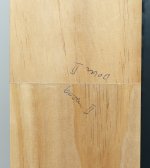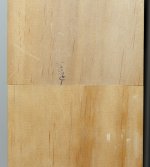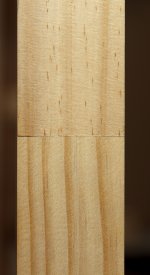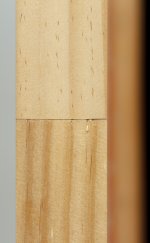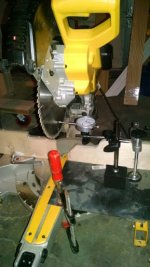I'm having difficulty getting a 'straight' cut on my Kapex.
I've attached pictures of the outcome, after trimming square timber, i.e. Accoya (radiata pine) wood.
The wood I used was planed square with my Felder AD741.
I used several (Festool) blades, 60/80 teeth and the aluminum blade. All gave the exact same issue: Cutting line on the top side is accurate, on the bottom (corners) there is a visible gap.
I'm in the process of building doors (exterior/interior), windows and moldings. Can I expect a straight cut from the Kapex?
How do I resolve this issue?
Kind regards,
Gijs
'boven' means top side, in Dutch
First picture is the top side of the two pieces;
Second picture is the side facing down;
Third and fourth picture are the sides of the two pieces.
[attachimg=1][attachimg=2][attachimg=3][attachimg=4]
I've attached pictures of the outcome, after trimming square timber, i.e. Accoya (radiata pine) wood.
The wood I used was planed square with my Felder AD741.
I used several (Festool) blades, 60/80 teeth and the aluminum blade. All gave the exact same issue: Cutting line on the top side is accurate, on the bottom (corners) there is a visible gap.
I'm in the process of building doors (exterior/interior), windows and moldings. Can I expect a straight cut from the Kapex?
How do I resolve this issue?
Kind regards,
Gijs
'boven' means top side, in Dutch
First picture is the top side of the two pieces;
Second picture is the side facing down;
Third and fourth picture are the sides of the two pieces.
[attachimg=1][attachimg=2][attachimg=3][attachimg=4]

